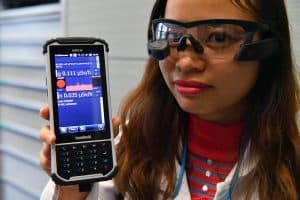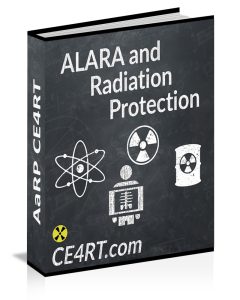Radiation Monitoring Devices for Healthcare Workers

Radiation is used in digital radiographic imaging departments to diagnose and treat a vast number of medical conditions. The benefits of radiation in diagnostic imaging are beyond dispute, but ionizing radiation can be harmful to the human body. For this reason, radiation monitoring devices are critical. A number of detection devices have been developed to calculate the radiation exposure received by an individual and to detect the amount of radiation present in the environment or on surfaces (contamination).
Hospital workers in radiology departments work with radiation-emitting devices and must use radiation monitoring devices. These consist of specialized equipment that accurately measures their occupational exposure. Low-level exposures are measured over time to calculate the cumulative dose. Significantly large exposures require an investigation as they could cause the radiographer to exceed the recommended occupational limit. In addition, if there is overexposure, the radiographer may require medical treatment. Appropriate radiation monitoring devices and equipment safety features are necessary to give early indication of radiation exposure and to prevent doses in excess of occupational limits. Radiation monitoring devices also help assess trends and provide a record of information for legal purposes. Healthcare providers, including radiologic technologists, must be familiar with the terminology and standard practices used in radiation monitoring as well as the benefits and limitations of radiation monitoring with commonly used equipment.
Types of Radiation Monitoring Devices
Robust radiation monitoring devices are necessary to determine the radiation exposure of workers in medical imaging departments where occupational exposure is relatively high. Broadly speaking, there are two types of radiation monitoring devices – those that are worn by individual users (badges, personal radiation detectors, and dosimeters) and those that are installed to assess radiation hazard in an area of a medical facility (survey meters). Personal radiation detectors have a fast response time and promptly alert the wearer to the presence of radiation. Dosimeters measure the accumulated dose received by the person wearing the device.
Instruments called identifiers are used to determine which radioisotope is present in the work area. Survey meters measure radiation levels in the environment. In medical imaging departments, each worker is issued at least one dosimeter. A qualified medical physicist determines the number of identifiers and radiation monitoring devices (survey meters) required to detect contamination and measure radiation in the air. It is important to remember that radiation detection devices do not provide protection from radiation; they merely identify and/or measure exposure.

Other Radiation Protection Measures
Radiographic work is primarily performed in dedicated X-ray rooms. Radiation protection measures are necessary in these rooms to protect people from the primary beam as well as scatter. Facility design in hospitals ensures minimal reliance on administrative controls and personal protective devices for radiation protection during routine operations. The goal is to accomplish radiation safety with the least number of controlled areas, keeping in mind practical considerations and social and economic factors.
The expected workload in a department (typical number of patients treated per week) and the use factor (beam-on time per week) are considered during facility design. In addition, the occupancy of rooms adjacent to the radiology suite are taken into account to determine the need for shielding and radiation monitoring devices. If the workload is more or an adjacent area is occupied more, the X-ray room will require more shielding. The degree of radiation protection, building plans, and X-ray room plans must comply with state radiation safety standards.
Continuing Education for Radiologic Technologists
We offer several online X-ray CE courses at competitive prices. All our e-courses are good for ARRT® and other national registries as well as US states and Canadian Provinces, all other Radiologic Technologist, Nuclear Medicine, and Ultrasound Technologist registries in North America for both full and limited permit technologists, guaranteed.
Get more information about x ray continuing education here.
